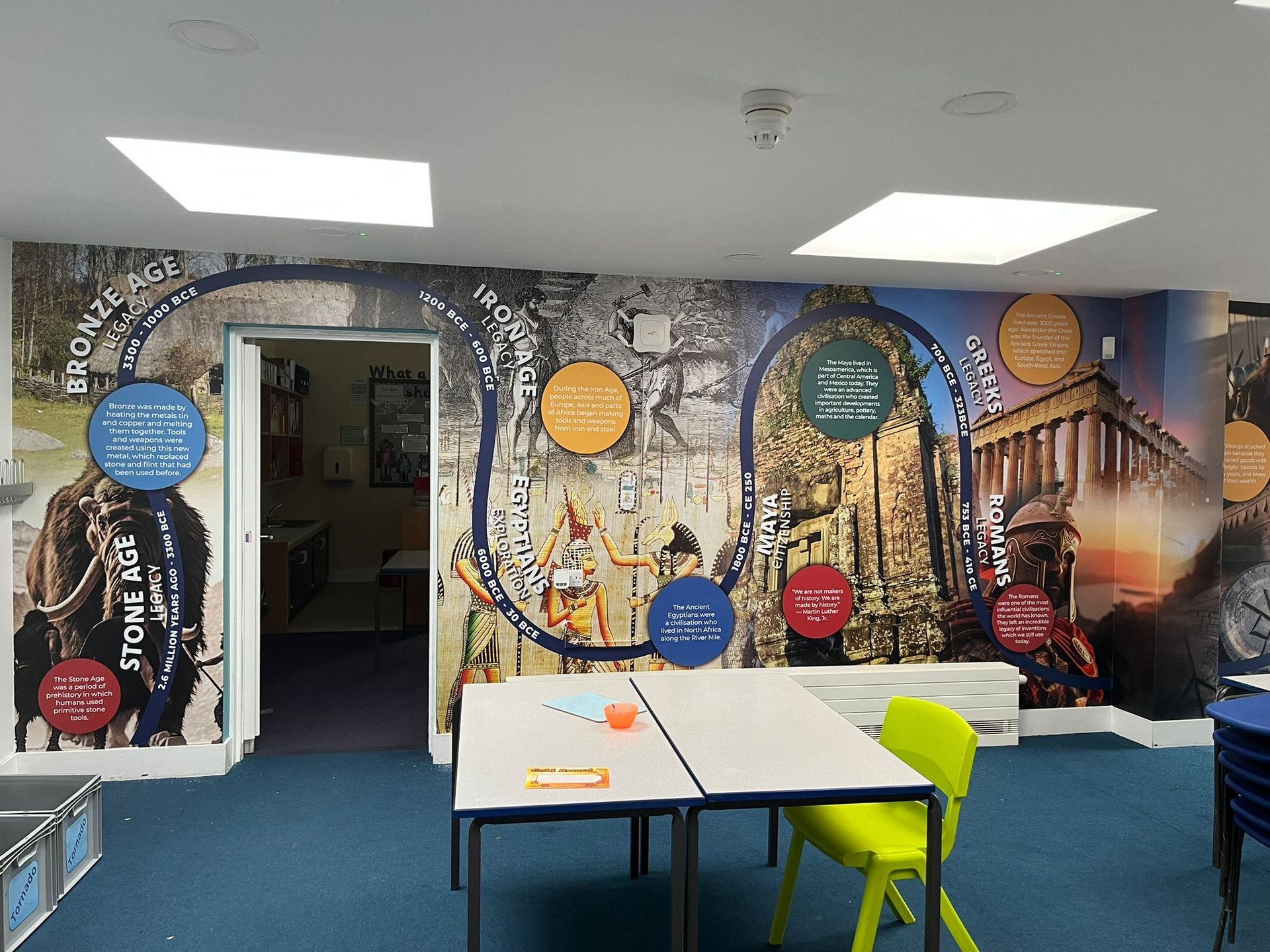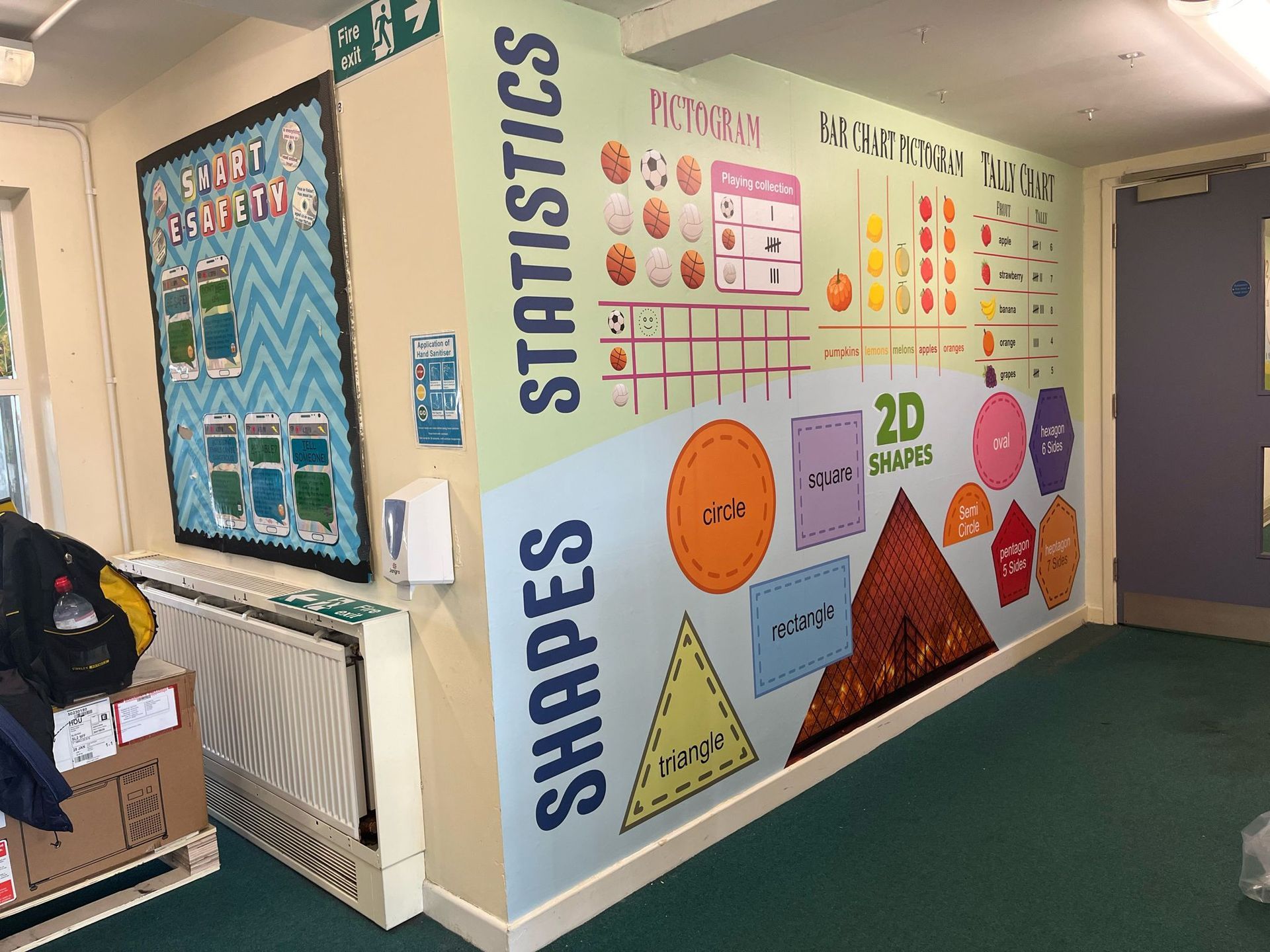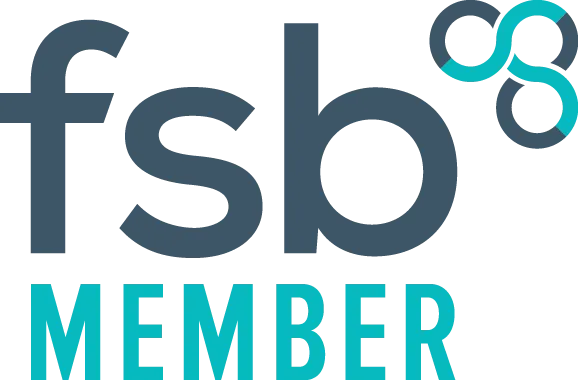Impact on pupils 23
Themed Education: Visual elements centred around topics can create a learning atmosphere. For instance, a history classroom could showcase timelines, portraits of figures and critical events to help students grasp and retain the information being taught.

Using wall graphics for themed learning can significantly enhance the educational journey by offering context and visual aids that boost memory and comprehension. Here's how you can effectively apply themed learning across subjects;
History Classroom
Key Features;
- Timelines: Presenting timelines of eras helps students grasp the sequence of events.
- Historical Figures: Including portraits and brief biographies of figures can make history more relatable and memorable.
- Significant Events: representations and descriptions of major events aid students in visualising their impact.
Design Concepts;
- Interactive Timelines: Utilise QR codes linking to videos or additional resources on periods or events.
- Maps and Infographics: Integrate maps illustrating changes and infographics summarising complex events.
- Multimedia Incorporation: space for showcasing content, such as screens or projectors, for documentaries or historical footage.

Mathematics Classroom
Elements:
- Formulas and Theorems: Display essential formulas, theorems, and their derivations.
- Geometric Shapes: Visual representations of geometric concepts and proofs.
- Historical Context: Highlight the history of mathematics and contributions from different cultures.
Design Ideas:
- Formula Walls: Create a wall dedicated to formulas with explanations and real-life applications.
- Puzzle and Problem Corners: Sections where students can engage with math puzzles and problems.
- Cultural Math Contributions: Feature contributions from mathematicians worldwide to highlight diversity in mathematics.
Language Arts Classroom
Elements:
- Literary Timelines: Display timelines of literary movements and critical authors.
- Quotes and Excerpts: Feature famous quotes and excerpts from critical literary works.
- Grammar and Vocabulary: Visual aids for grammar rules and vocabulary building.
Design Ideas:
- Author Highlights Portraits and brief biographies of influential authors along with their famous works.
- Interactive Story Maps: Create maps that outline the plots of novels or stories.
Grammar Trees: Visual representations of sentence structures and parts of speech.
Art Classroom
Elements:
- Art Movements: Timeline and characteristics of different art movements.
- Famous Artists: Portraits and notable works of influential artists.
- Techniques and Mediums: Visual guides to different artistic techniques and mediums.
Design Ideas:
- Movement Showcases Sections dedicated to specific art movements with examples and descriptions.
- Technique Tutorials: Step-by-step visual guides for shading, perspective, and colour mixing techniques.
- Interactive Exhibits: Spaces for students to display their work and for interactive art activities.
Implementation Strategy
- Collaborate with Educators:
- Work closely with teachers to ensure the graphics align with the curriculum and educational goals.
- Gather input on what topics and elements would be most beneficial for visual representation.
- Student Involvement:
- Engage students in the design process by incorporating their ideas and artwork.
- Create interactive elements that encourage student participation and exploration.
Regular Updates:
- Periodically update the graphics to reflect curriculum changes or introduce new topics.
- Ensure that the content remains fresh and engaging for students.
Sustainable Materials:
- Use eco-friendly materials and printing processes to create the wall graphics.
- Emphasise your commitment to sustainability in the design and installation process.
Creating thematic wall graphics tailored to specific subjects allows you to transform educational spaces into dynamic, interactive learning environments that foster curiosity and deeper understanding.









